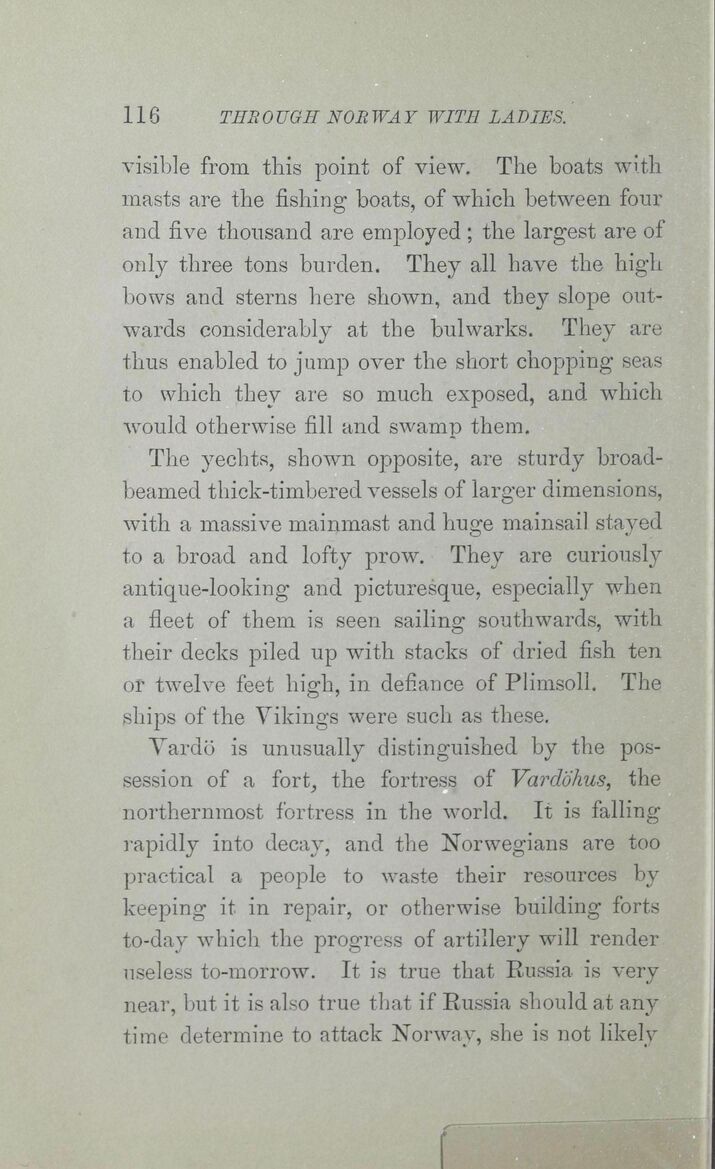
Full resolution (JPEG) - On this page / på denna sida - Sidor ...

<< prev. page << föreg. sida << >> nästa sida >> next page >>
Below is the raw OCR text
from the above scanned image.
Do you see an error? Proofread the page now!
Här nedan syns maskintolkade texten från faksimilbilden ovan.
Ser du något fel? Korrekturläs sidan nu!
This page has been proofread at least once.
(diff)
(history)
Denna sida har korrekturlästs minst en gång.
(skillnad)
(historik)
visible from this point of view. The boats with
masts are the fishing boats, of which between four
and five thousand are employed; the largest are of
only three tons burden. They all have the high
bows and sterns here shown, and they slope
outwards considerably at the bulwarks. They are
thus enabled to jump over the short chopping seas
to which they are so much exposed, and which
would otherwise fill and swamp them.
The yechts, shown opposite, are sturdy
broad-beamed thick-timbered vessels of larger dimensions,
with a massive mainmast and huge mainsail stayed
to a broad and lofty prow. They are curiously
antique-looking and picturesque, especially when
a fleet of them is seen sailing southwards, with
their decks piled up with stacks of dried fish ten
or twelve feet high, in defiance of Plimsoll. The
ships of the Vikings were such as these.
Vardö is unusually distinguished by the
possession of a fort, the fortress of Vardöhus, the
northernmost fortress in the world. It is falling
rapidly into decay, and the Norwegians are too
practical a people to waste their resources by
keeping it in repair, or otherwise building forts
to-day which the progress of artillery will render
useless to-morrow. It is true that Russia is very
near, but it is also true that if Russia should at any
time determine to attack Norway, she is not likely
<< prev. page << föreg. sida << >> nästa sida >> next page >>